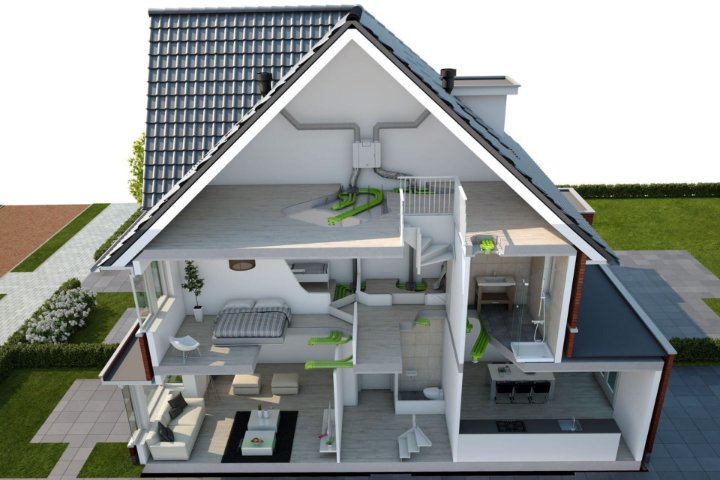Discover our total solutions!
We offer comprehensive solutions for residential ventilation, a unique specialty we take great pride in!
A complete Ubbink ventilation system comprises five components, from the ventilation unit to the finishing valve:
- Ubiflux heat recovery units: Extremely compact ventilation units for wall or ceiling installation.
- Air Excellent air distribution system: Flexible and modular.
- Aerfoam insulated pipe system.
- Roof Terminals: Suitable for flat and sloping roofs, both insulated and non-insulated.
- Haelix supply and discharge valves: Available in round and square designs.
From our unique position, we provide quick, accurate, and reliable advice on our ventilation systems, all from the comfort of your home.
Have an upcoming project and need a complete solution from design to delivery? Explore our MVHR Solutions!



